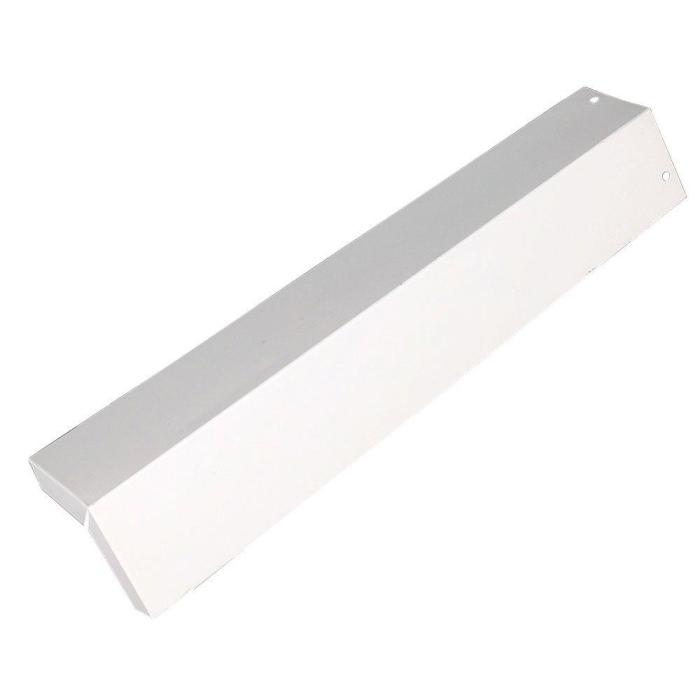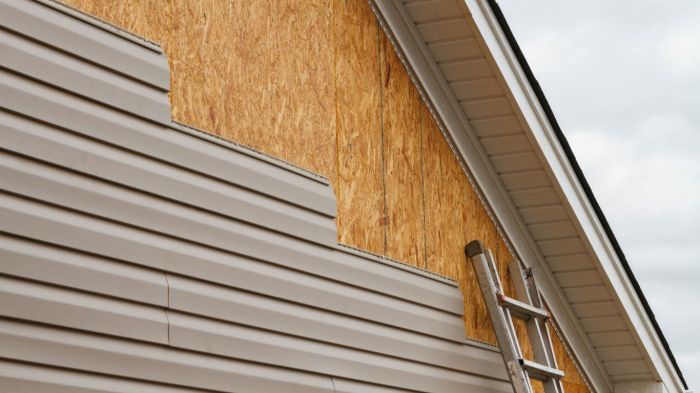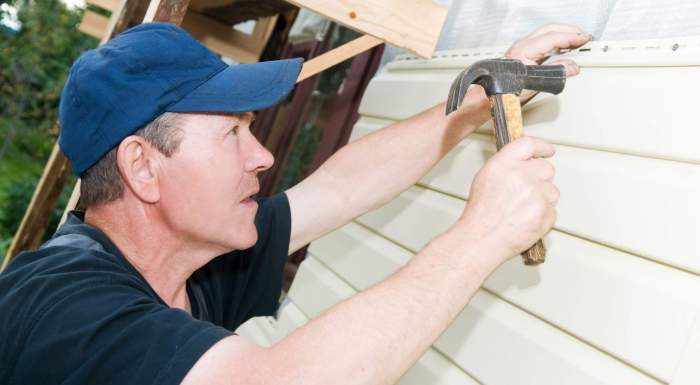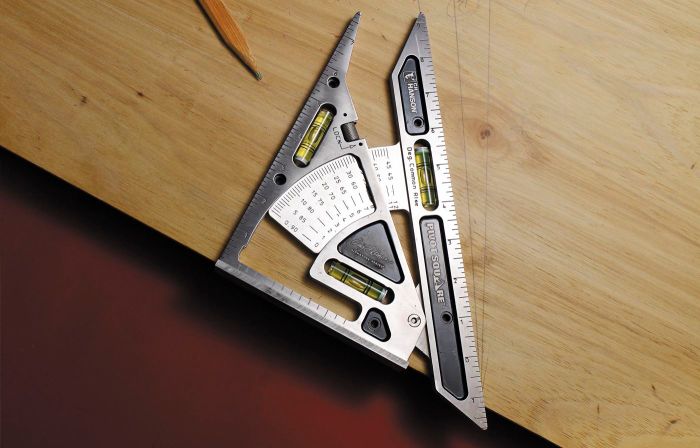How to Clean Siding Mold Effectively
Identifying Mold on Siding
How to clean siding mold – Identifying mold on your siding is the crucial first step in effective remediation. Early detection prevents significant damage and potential health issues. Accurate identification requires understanding the different types of mold, their appearance on various siding materials, and the necessary safety precautions.
Types of Mold Commonly Found on Siding
Several mold types thrive in the damp conditions often found on siding, particularly in shaded or poorly ventilated areas. Common culprits include
- Cladosporium*, a dark-green or black mold often appearing as fuzzy patches;
- Alternaria*, a dark olive-green or brown mold with a velvety texture; and
- Aspergillus*, which can range in color from black to green to yellow-brown and often presents as a powdery coating. Other less common but potentially problematic molds may also be present, necessitating professional assessment for complex cases. The specific mold species often requires laboratory analysis for definitive identification.
Visual Indicators of Mold Growth on Different Siding Materials
The appearance of mold varies depending on both the mold type and the siding material. On vinyl siding, mold often presents as dark discoloration, sometimes appearing as streaks or blotches. The discoloration may be black, green, brown, or gray, depending on the mold species.
Wood siding, due to its porous nature, can absorb mold more readily, leading to more extensive and deeply embedded growth, often resulting in discoloration and textural changes, including softening or warping of the wood. Aluminum siding, being less porous, usually shows mold as surface discoloration, often appearing as dark stains or streaks, though significant mold growth is less common.
Safety Precautions When Inspecting Siding for Mold
Inspecting siding for mold requires prioritizing safety. Mold can release spores that trigger allergic reactions or respiratory problems in susceptible individuals. Always wear protective gear, including an N95 respirator mask to filter out mold spores, gloves to prevent skin contact, and eye protection to shield your eyes from airborne particles.
If the mold infestation is extensive or you suspect potentially hazardous mold species, consider hiring a professional mold inspector or remediation specialist. Proper ventilation during the inspection is also crucial to minimize spore inhalation.
Comparison of Mold Appearance on Different Siding Materials
| Mold Type | Vinyl Siding | Wood Siding | Aluminum Siding |
|---|---|---|---|
| Cladosporium | Dark green to black blotches or streaks; often fuzzy | Dark green to black discoloration; may penetrate wood, causing softening | Dark green to black stains or streaks; typically superficial |
| Alternaria | Dark olive-green or brown patches; velvety texture | Dark olive-green or brown discoloration; may penetrate wood | Dark olive-green or brown stains; usually surface-level |
| Aspergillus | Powdery coating; colors vary (black, green, yellow-brown) | Powdery coating; colors vary; may penetrate wood | Powdery coating; colors vary; typically superficial |
Preparing for Mold Removal
Safe and effective mold removal from siding requires careful preparation. Failing to adequately prepare can lead to ineffective cleaning, the spread of mold spores, and potential health risks. This section details the necessary steps to ensure a safe and successful cleaning process.
Before beginning any mold removal, prioritizing safety and containment is paramount. This involves selecting appropriate personal protective equipment (PPE) and implementing strategies to prevent the spread of mold spores to other areas of your home or property.
Necessary Safety Equipment
Protecting yourself from mold exposure is crucial. The following safety equipment should be worn at all times during the mold removal process:
- N95 respirator:This respirator filters out at least 95% of airborne particles, including mold spores. It is essential for preventing inhalation of mold spores, which can trigger allergic reactions or respiratory problems in susceptible individuals.
- Protective eyewear:Goggles or safety glasses will protect your eyes from splashes of cleaning solutions and flying debris.
- Gloves:Heavy-duty rubber or nitrile gloves are necessary to protect your hands from the cleaning solutions and potential skin irritants present in mold.
- Long-sleeved shirt and long pants:Protective clothing will minimize skin exposure to mold and cleaning solutions.
- Waterproof boots:These will protect your feet from moisture and potential chemical spills.
Protecting Surrounding Areas
Preventing the spread of mold spores to unaffected areas is crucial. This requires careful planning and the use of appropriate containment methods.
Before beginning cleaning, thoroughly cover any nearby landscaping, windows, doors, and other surfaces that might be affected by mold spores or cleaning solutions. Use heavy-duty plastic sheeting and painter’s tape to secure the sheeting effectively. For example, if cleaning the siding near a window, cover the window completely with plastic sheeting taped securely to the frame.
Containing Mold Spores During Cleaning
Several methods can effectively contain mold spores during cleaning, minimizing the risk of spreading contamination. The choice of method will depend on the extent of the mold infestation and the cleaning technique employed.
- Using a HEPA vacuum:A high-efficiency particulate air (HEPA) vacuum is designed to capture a high percentage of airborne particles, including mold spores. Use it to vacuum the siding before and after cleaning to remove loose spores.
- Misting with water:Before cleaning, lightly mist the affected area with water to help reduce the amount of airborne spores released during scrubbing. This helps to keep spores from becoming airborne.
- Working from top to bottom:Cleaning from the highest point downwards helps to prevent spores from falling onto already-cleaned areas.
Setting Up a Safe Workspace
Establishing a safe workspace is the foundation for successful and risk-free mold removal. This involves a series of steps designed to ensure both your safety and the containment of mold spores.
- Assess the area:Carefully examine the affected siding to determine the extent of the mold infestation and plan your approach accordingly. Note the direction of prevailing winds to minimize spore dispersal.
- Gather your supplies:Collect all necessary cleaning solutions, safety equipment, and containment materials before beginning the process. This ensures a smooth and efficient workflow.
- Establish containment:Use plastic sheeting and tape to create a barrier around the work area, protecting surrounding surfaces from mold spores and cleaning solutions. For instance, if cleaning a section of siding on a multi-story building, consider using drop cloths below to catch any debris.
- Put on your PPE:Don your N95 respirator, protective eyewear, gloves, and protective clothing before entering the work area.
- Prepare cleaning solution:Mix the cleaning solution according to the manufacturer’s instructions. Ensure adequate ventilation in the work area if using harsh chemicals.
Cleaning Methods for Different Siding Types
Cleaning mold from siding requires a tailored approach depending on the material. Different siding types react differently to cleaning solutions and scrubbing, so understanding these nuances is crucial for effective and safe mold removal. Improper cleaning can damage your siding, so carefully consider the material before beginning.
Vinyl Siding Cleaning
Vinyl siding is relatively easy to clean and quite durable. However, harsh chemicals can damage its surface, so gentler methods are preferred. A mixture of water and mild detergent is usually sufficient. Avoid abrasive cleaners or scrub brushes that could scratch the surface.
- Cleaning Solution:Mix one gallon of water with a quarter cup of mild dish soap (avoid bleach). A homemade solution using white vinegar (one part vinegar to three parts water) can also be effective for mild mold.
- Application Method:Apply the solution using a garden sprayer or a soft-bristled brush. Work from top to bottom to allow the solution to run down and rinse away the mold.
- Cleaning Procedure:
- Pre-rinse the siding with a garden hose to remove loose dirt and debris.
- Apply the cleaning solution, allowing it to dwell for 10-15 minutes.
- Scrub gently with a soft-bristled brush, paying attention to areas with heavier mold growth.
- Rinse thoroughly with a garden hose, ensuring all soap residue is removed.
Wood Siding Cleaning, How to clean siding mold
Wood siding is more susceptible to damage than vinyl, requiring a gentler approach. Pressure washing is generally discouraged as it can damage the wood and drive moisture deeper into the surface, promoting further mold growth.
- Cleaning Solution:A mixture of water and a mild, oxygen-bleach based cleaner is generally safe for wood siding. Avoid chlorine bleach, which can discolor the wood. A homemade solution using baking soda (one cup baking soda to one gallon of water) can also be effective for light mold.
- Application Method:Apply the solution using a soft-bristled brush or a sponge. Avoid excessive scrubbing.
- Cleaning Procedure:
- Pre-rinse the siding with a garden hose to remove loose dirt and debris.
- Apply the cleaning solution, allowing it to dwell for 15-20 minutes.
- Gently scrub the affected areas with a soft-bristled brush or sponge.
- Rinse thoroughly with a garden hose, ensuring all soap residue is removed. Allow the wood to dry completely.
Aluminum Siding Cleaning
Aluminum siding is durable and relatively easy to clean. However, abrasive cleaners can scratch its surface, and strong chemicals can cause discoloration.
- Cleaning Solution:A simple solution of water and mild dish soap is usually sufficient. For stubborn mold, a solution of water and trisodium phosphate (TSP) can be effective, but always follow the manufacturer’s instructions carefully and wear protective gear.
- Application Method:Apply the solution using a garden sprayer or a soft-bristled brush. For TSP solutions, use a pump sprayer to avoid splashing.
- Cleaning Procedure:
- Pre-rinse the siding with a garden hose to remove loose dirt and debris.
- Apply the cleaning solution, allowing it to dwell for 10-15 minutes.
- Scrub gently with a soft-bristled brush, paying attention to areas with heavier mold growth.
- Rinse thoroughly with a garden hose, ensuring all soap residue is removed.
Advanced Mold Removal Techniques
For more stubborn mold infestations or larger areas of affected siding, more advanced techniques may be necessary to ensure thorough and effective removal. These techniques require careful consideration and appropriate safety precautions. Improper use can damage your siding or pose health risks.
Pressure Washing for Mold Removal
Pressure washing offers a powerful method for removing mold from siding, particularly on larger surfaces. A pressure washer uses high-pressure water jets to dislodge and remove mold spores and grime. However, it’s crucial to use the correct pressure setting to avoid damaging the siding material.
Too much pressure can gouge or crack softer siding materials like vinyl or wood. Before beginning, test the pressure washer on an inconspicuous area to assess its impact on your siding. Maintain a safe distance from the surface and use a wide-fan nozzle to distribute the water evenly, preventing concentrated streams that could damage the siding.
Always wear appropriate safety gear, including eye protection and gloves. After pressure washing, rinse the area thoroughly with clean water to remove any remaining mold spores or debris.
Advantages and Disadvantages of Bleach Solutions
Bleach solutions are a common household remedy for mold removal due to their potent disinfectant properties. Sodium hypochlorite, the active ingredient in bleach, effectively kills mold spores. However, using bleach requires careful consideration. Advantages include its affordability and wide availability.
Disadvantages include potential damage to certain siding materials, particularly those that are painted or stained. Bleach can also fade or discolor the siding, and its strong chemical odor can be irritating. Moreover, mixing bleach with other cleaning products can create hazardous fumes.
Always dilute bleach according to the manufacturer’s instructions and ensure adequate ventilation when using it. Never mix bleach with ammonia or other cleaning agents.
Using Specialized Mold-Killing Solutions
Commercial mold-killing solutions offer a safer and often more effective alternative to bleach. These products are specifically formulated to target and eliminate mold without causing damage to siding materials. They typically contain biocides that kill mold spores while being less harsh than bleach.
When selecting a mold-killing solution, choose one that is compatible with your siding type. Always follow the manufacturer’s instructions carefully, paying attention to dilution ratios, application methods, and safety precautions. Many specialized solutions require pre-wetting the moldy area before application to ensure proper penetration and effectiveness.
Proper Scrubbing Technique for Mold Removal
Scrubbing mold from siding requires a gentle yet thorough approach to avoid damaging the surface. Use a soft-bristled brush or sponge to avoid scratching the siding. Apply your chosen cleaning solution (bleach or specialized mold killer) according to the manufacturer’s instructions, allowing it to dwell on the surface for the recommended time before scrubbing.
Work in small sections, rinsing frequently with clean water to prevent the solution from drying and leaving residue. Avoid excessive scrubbing pressure, which can damage the siding. For textured siding, use a brush with a gentler bristle to avoid causing further damage.
For particularly stubborn mold, you may need to repeat the process or consider using a pressure washer (with caution) as a pre-treatment.
Preventing Future Mold Growth
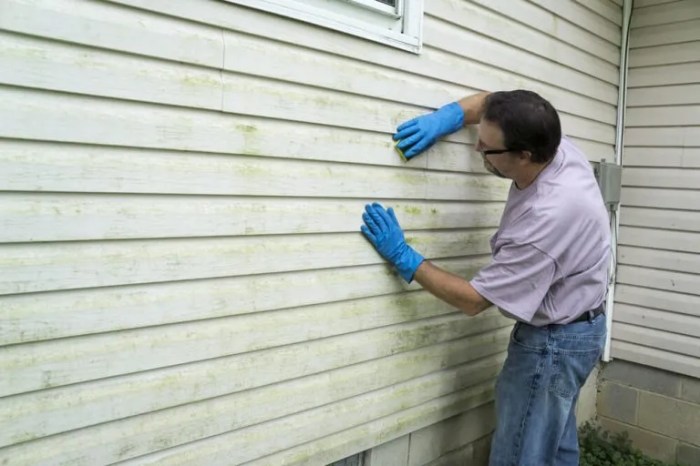
Preventing mold growth on your siding is crucial for maintaining your home’s curb appeal and protecting its structural integrity. Regular maintenance and proactive measures significantly reduce the likelihood of future mold infestations. By addressing ventilation, drainage, and cleaning, you can create a less hospitable environment for mold spores.
Improving Home Ventilation
Adequate ventilation is key to preventing mold growth. Moisture is the primary driver of mold proliferation, and proper ventilation helps to reduce humidity levels both inside and outside the home. This can be achieved through several methods. Exhaust fans in bathrooms and kitchens help remove moisture-laden air directly from sources of high humidity.
Properly functioning attic vents allow for the escape of warm, moist air, preventing condensation on roof surfaces and siding. Consider installing ridge vents or soffit vents to improve attic ventilation. In addition, ensuring good airflow around the house by trimming overhanging trees and bushes helps prevent moisture buildup on siding.
Maintaining Proper Drainage Around the Foundation
Water accumulating near the foundation is a major contributor to siding mold. Effective drainage redirects water away from the house, preventing it from seeping into the foundation and wicking up into the siding. Ensure gutters and downspouts are clean and free of debris to allow for efficient water runoff.
Extend downspouts at least four feet away from the foundation, directing water into a storm drain or landscaped area. Grading the soil around the foundation, sloping it away from the house, is essential for proper drainage. Consider installing a French drain if you have persistent drainage problems.
Regularly inspect and maintain these drainage systems to prevent blockages and ensure proper functioning.
Regular Siding Cleaning
Regular cleaning removes mold spores and other organic matter that provide a food source for mold growth. This proactive approach prevents mold from establishing a foothold and spreading across the siding. The frequency of cleaning depends on factors like climate, tree cover, and the type of siding.
In areas with high humidity or significant tree cover, more frequent cleaning may be necessary. Cleaning can involve using a pressure washer (carefully, to avoid damage), a garden hose with a scrub brush, or specialized mold-killing solutions, depending on the type of siding.
Always refer to the manufacturer’s instructions for cleaning recommendations specific to your siding material.
Preventative Measures Checklist
This checklist summarizes the key preventative measures to minimize mold growth on your siding:
- Regularly inspect siding for signs of mold.
- Clean gutters and downspouts at least twice a year.
- Ensure downspouts extend at least four feet from the foundation.
- Grade the soil around the foundation to slope away from the house.
- Maintain proper attic ventilation.
- Use exhaust fans in bathrooms and kitchens.
- Trim overhanging trees and bushes to improve airflow.
- Clean siding at least once a year, or more frequently if needed.
- Address any leaks or water damage promptly.
- Consider professional mold remediation for extensive infestations.
Illustrative Examples
Understanding the visual characteristics of mold and mildew on different siding materials is crucial for effective cleaning and prevention. The following examples illustrate the appearance of mold growth on various siding types, highlighting key differences to aid in identification.
Black Mold on Cedar Siding
Black mold on cedar siding typically presents as dark, often velvety patches. The color can range from a deep charcoal gray to a nearly black hue, depending on the mold species and the age of the growth. The texture is usually slightly raised and fuzzy, unlike the smooth surface of untreated cedar.
It frequently appears in shaded areas of the house, such as the north-facing side or areas with poor air circulation, where moisture can accumulate. Locations around gutters, downspouts, or areas with leaking roofs are particularly susceptible. The mold might appear as distinct colonies or spread diffusely across the siding, potentially creating a streaked pattern.
Prolonged exposure can lead to discoloration of the underlying wood, making it difficult to remove completely.
Mildew and Mold on Vinyl Siding
Mildew and mold on vinyl siding exhibit distinct visual differences. Mildew typically appears as a powdery, white or grayish coating, often spreading in a relatively even layer across the surface. The texture is smooth and easily wiped away, in contrast to mold, which often appears as darker, more firmly attached patches.
Mold on vinyl siding might present in various colors, including black, green, brown, or even shades of gray. Its texture is usually less powdery than mildew and may exhibit a slightly raised or textured appearance. Mold tends to spread less uniformly than mildew, often forming distinct spots or colonies.
The growth pattern is often influenced by moisture accumulation, frequently appearing near ground level or in areas with poor drainage.
Mold Growth on Aluminum Siding
Mold growth on aluminum siding, often resulting from prolonged moisture exposure, is typically less noticeable than on porous materials like wood or fiber cement. However, after extended periods of dampness, dark discoloration can appear. This discoloration is not typically raised or textured, unlike mold on other siding types, but rather a staining effect.
The color is usually a dark gray or black, although the underlying aluminum surface remains unaffected. While aluminum siding itself is not susceptible to mold penetration, the mold can grow on any accumulated dirt or debris on the surface.
The presence of persistent moisture can lead to the accumulation of algae or other microorganisms alongside mold, further contributing to discoloration. This staining may be more challenging to remove compared to mold on other siding types, often requiring more aggressive cleaning methods.
Final Wrap-Up: How To Clean Siding Mold
Successfully cleaning siding mold requires a multi-faceted approach. By accurately identifying the type of mold and siding material, employing appropriate safety precautions, and selecting the correct cleaning method, you can effectively restore your home’s exterior. Remember, preventing future mold growth is key, so incorporating regular cleaning and preventative maintenance into your home care routine will save you time and effort in the long run.
A clean and mold-free exterior enhances not only the aesthetic appeal of your home but also contributes to a healthier living environment.

